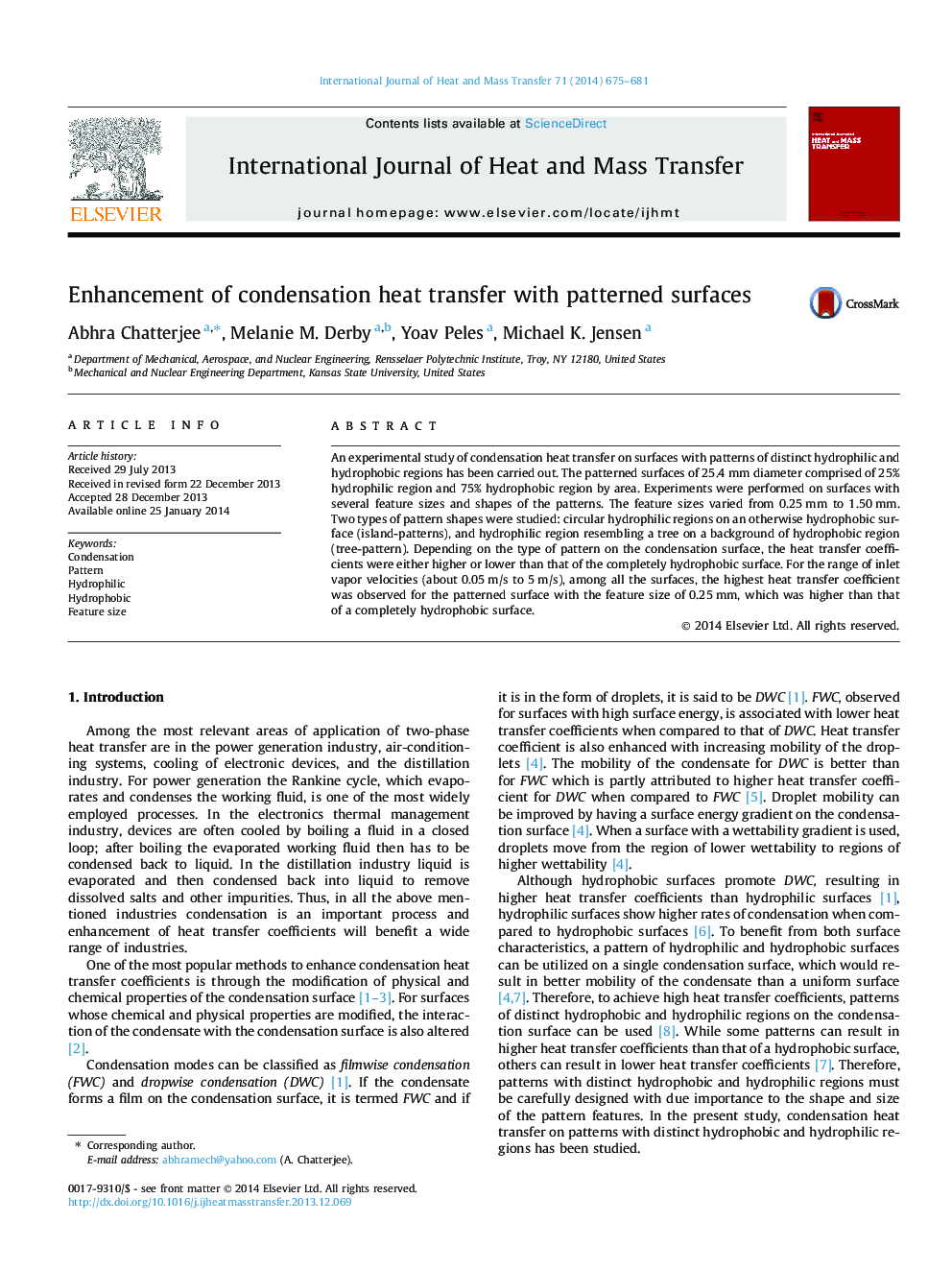| Article ID | Journal | Published Year | Pages | File Type |
|---|---|---|---|---|
| 7057761 | International Journal of Heat and Mass Transfer | 2014 | 7 Pages |
Abstract
An experimental study of condensation heat transfer on surfaces with patterns of distinct hydrophilic and hydrophobic regions has been carried out. The patterned surfaces of 25.4Â mm diameter comprised of 25% hydrophilic region and 75% hydrophobic region by area. Experiments were performed on surfaces with several feature sizes and shapes of the patterns. The feature sizes varied from 0.25Â mm to 1.50Â mm. Two types of pattern shapes were studied: circular hydrophilic regions on an otherwise hydrophobic surface (island-patterns), and hydrophilic region resembling a tree on a background of hydrophobic region (tree-pattern). Depending on the type of pattern on the condensation surface, the heat transfer coefficients were either higher or lower than that of the completely hydrophobic surface. For the range of inlet vapor velocities (about 0.05Â m/s to 5Â m/s), among all the surfaces, the highest heat transfer coefficient was observed for the patterned surface with the feature size of 0.25Â mm, which was higher than that of a completely hydrophobic surface.
Related Topics
Physical Sciences and Engineering
Chemical Engineering
Fluid Flow and Transfer Processes
Authors
Abhra Chatterjee, Melanie M. Derby, Yoav Peles, Michael K. Jensen,
